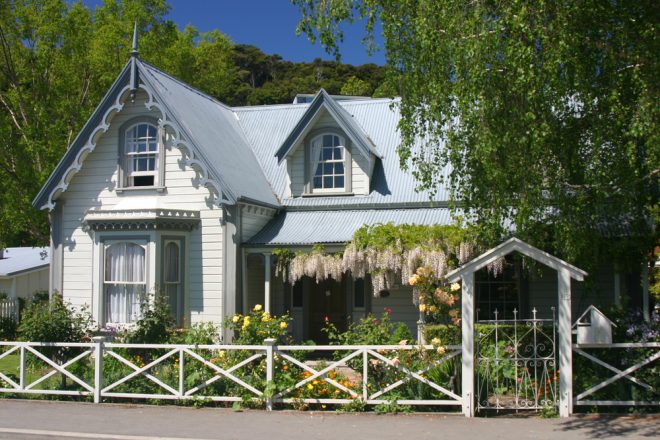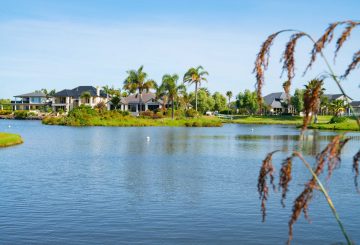The primary mega-trend driving the housing market over the years has been the long decline in inflationary pressures, which has allowed interest rates to drop significantly, increasing the incentive to borrow but also reducing the incentive to save. Amplifying this was the GFC in 2008 and subsequent rate cuts and programmes of quantitative easing overseas.
We’ve also had the shift towards more earners per household – possibly driven by other factors (and in turn this itself has contributed to rises in house prices) – but perhaps a circular symptom of higher house prices themselves. People have had to work more to be able to afford a property.
-
2011
Three years after the GFC and the housing market is still fairly quiet, with sales and prices subdued.
Affordability is OK but first home buyers are not especially active, while net migration is negative and dwelling consents are low. This was a period when construction confidence was shaken, which left a lasting legacy – a shortage of houses – that we’re still dealing with now.
New dwelling consents
The chart shows the quarterly change in new dwelling consents from 2011 to the third quarter of 2021.
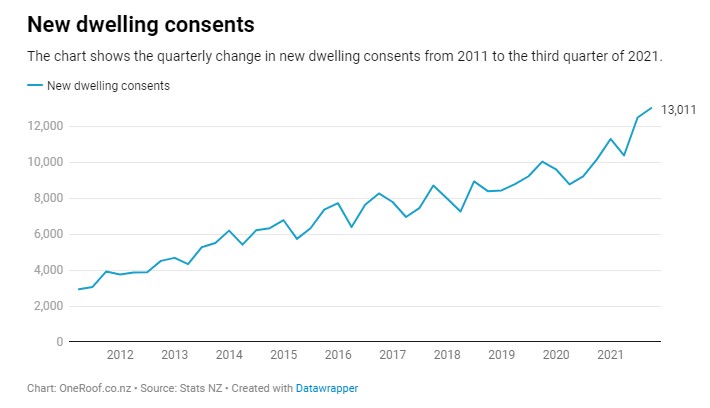
-
2012
The market begins to heat up a little, with migration less negative and mortgage rates going down. Investors are still a solid presence in the market and dwelling consents are off the floor, but not by much.
House price shift
The chart shows the change in New Zealand’s average property value. Figures supplied by CoreLogic.
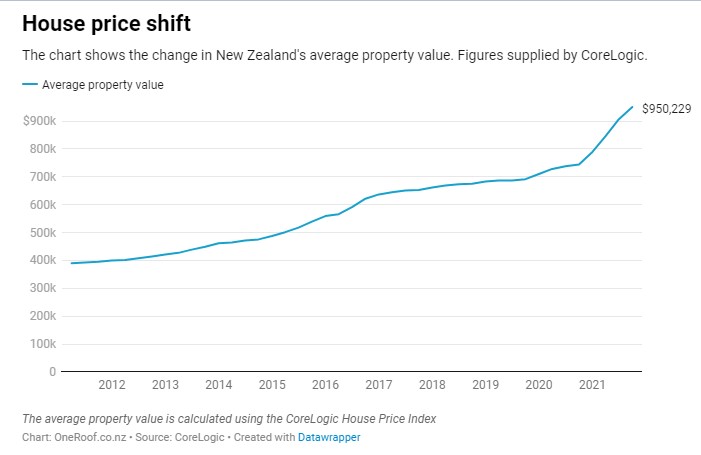
-
2013
A “milestone” year for the market: net migration turns positive, workforce participation is on the rise, and sales and prices are accelerating, even though mortgage rates have also risen.
Investors are still active but first home buyers are still relatively quiet, with the number of years needed for many people to save for a 20 per cent deposit now above seven.
Labour force participation
The chart shows the quarterly change in labour force participation from 2011 to the second quarter of 2021.
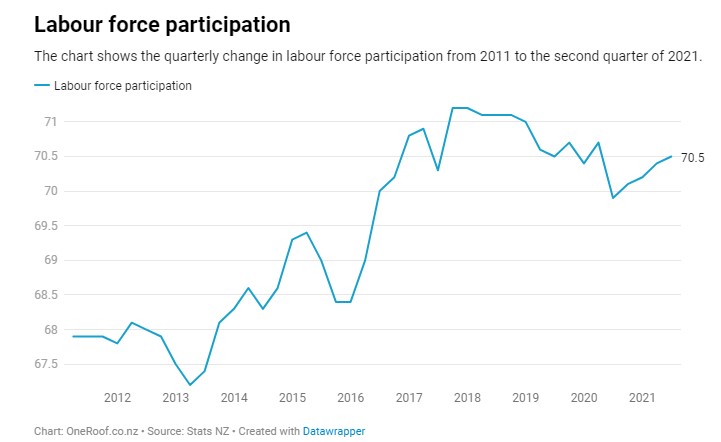
Dwelling consents are rising, but the legacy of the GFC shake-out is still there and the shortages of stock are growing.
2013 is also the year the Reserve Bank introduces loan-to-value ratio (LVR) restrictions, which limits the amount of low-deposit lending (less the 20 per cent deposit) to 10 per cent.
-
2014
Net migration ticks up significantly, but mortgage rates edge higher too, while both sales volumes and price growth cool.
Change in net migration
The chart shows the quarterly change in net migration from 2011 to the third quarter of 2021.
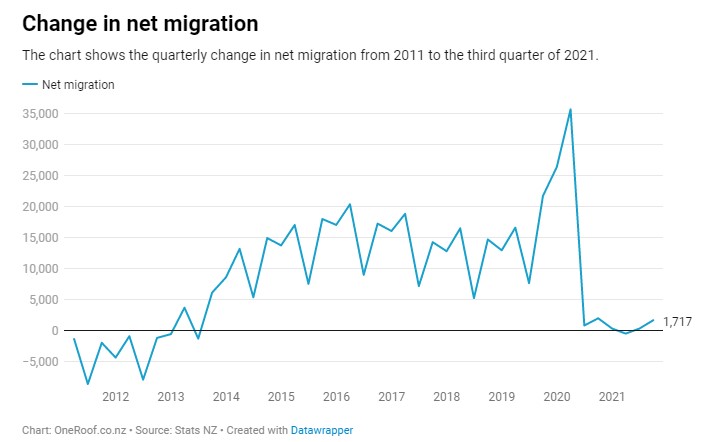
Investors remain active, but the LVR restrictions hit first home buyers hard.
The number of dwelling consents improve but are still fairly subdued by past standards.
-
2015
A boom year for the housing market: sales are strong and price growth accelerates into double digits, while mortgage rates are cut, net migration hits new heights and workforce participation is above 69 per cent.
First home buyers come back a little but the number of years needed to save for a deposit ticks above eight. Investors are still a strong presence in the market.
Deposit climb
The chart shows the change in the number years it take to save for a 20% deposit, based on the average household income and average property value for each quarter since 2011, assuming 15% of income can be saved each year.
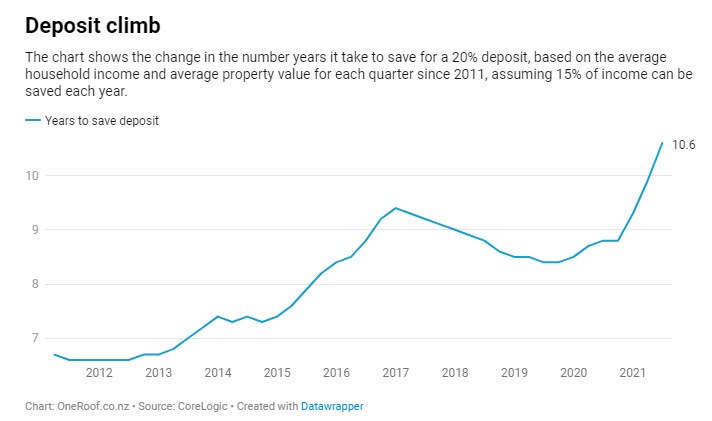
The shortage of houses is getting worse as dwelling consents just tick along.
National introduces the Brightline test, which imposes a tax on the sale of residential properties used for investment purposes within two years of purchase. The exception is if the house is a person’s main home.
The Reserve Bank changes the LVR rules: Auckland investors need a 30 per cent deposit while the deposit requirement jumps from 10 per cent to 15 per cent for everyone else.
-
2016
Another peak year for the market, with sales and prices rising quickly.
Migration is up and dwelling consents are rising but still not enough. Mortgage rates are stable but more people are coming into the workforce.
Mortgage rates: Fall and rise
The chart shows the quarterly change in the two-year fixed rate mortgage from 2011 to the third quarter of 2021
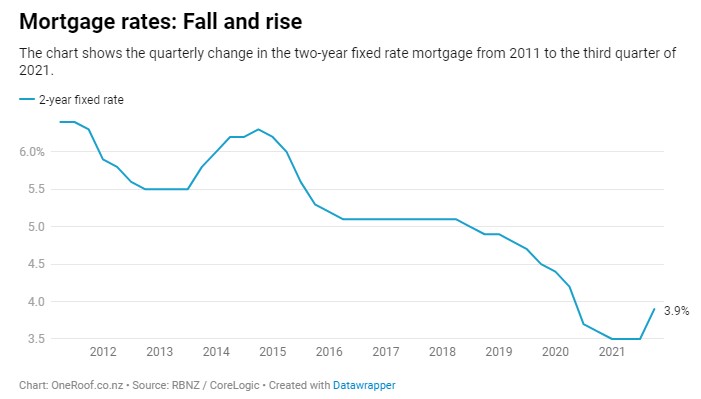
First home buyers are subdued – the number of years needed to save for a deposit is just over nine – while investor activity remains strong.
The Reserve Bank changes the LVRs again – a 40 per cent deposit is required by investors, and 20 per cent for others.
-
2017
A turning point is reached, with investors pulling back and overall sales and prices slowing.
The number of years needed to save for a deposit improve and first home buyers command a bigger share of the market.
First home buyers v investors
Mortgage rates are stable and migration eases but it is still high enough to put pressure on housing stock.
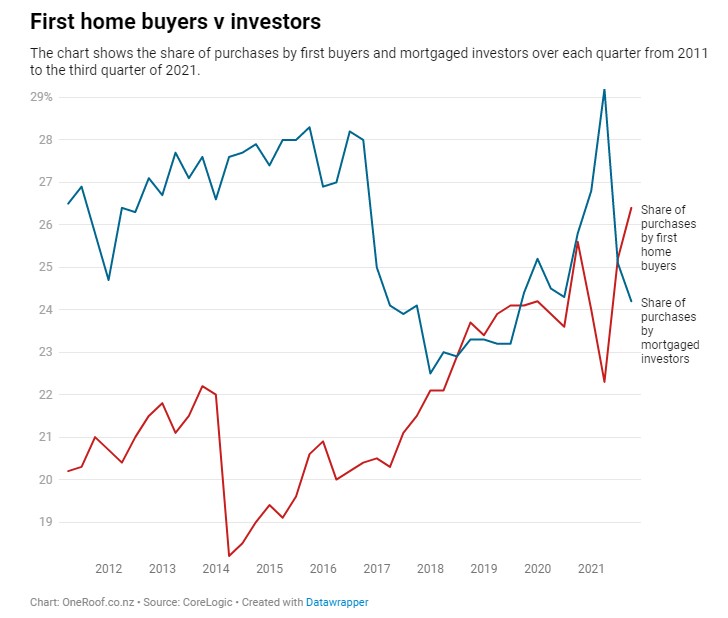
-
2018
A holding year for the market, with most indicators pretty stable.
The change in sale volumes
The chart shows the quarterly change in sales volumes from 2011 to the third quarter of this year.
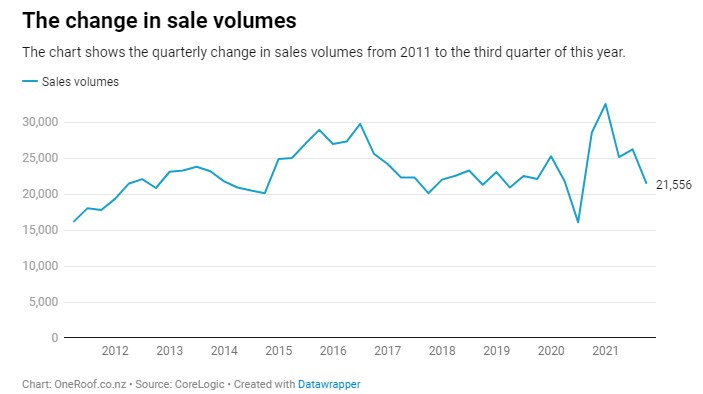
The Reserve Bank makes further tweaks to the LVR restrictions – the deposit requirement for investors drops from 40 per cent to 35 per cent while for owner-occupiers it rises to 15 per cent. The new Coalition Government extends the Brightline test to five years and introduces a foreign buyer ban.
-
2019
Another fairly stable year for the market. The Reserve Bank loosens the LVR rules further (investor deposits go down to 30 per cent, while for owner-occupiers it goes up to 20 per cent) and first home buyers increase their share of the market.
Change in weekly rents
The chart shows the quarterly change in New Zealand’s average weekly rent from 2011 to the third quarter of 2021.
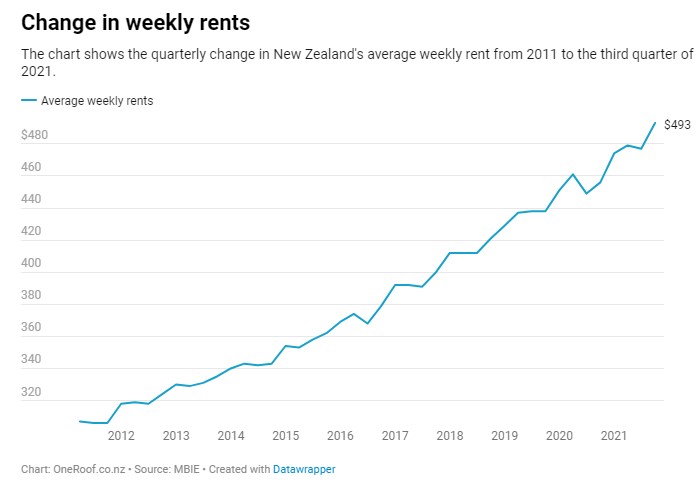
Migration and dwelling consents surge while mortgage rates drop.
The Government rejects proposals for a capital gains tax but introduces a tax ring-fence for rental property losses.
-
2020
Covid-19 hits early in the year and major changes are made by the Government and Reserve Bank in response: the Official Cash rate is cut to 0.25 per cent, LVR restrictions are removed, mortgage payments can be deferred, a funding for lending programme is instigated and quantitative easing is reintroduced.
The country goes into lockdown at the end of March and restrictions stay until the start of June. The housing market slumps in April and May but starts to pick up from June onwards.
Investors take advantage of smaller deposit requirement (only the banks’ own rules, circa 20 per cent), although Healthy Homes legislation causes a stir and raises costs.
Net migration collapses but dwelling consent numbers are solid and shortages of housing stock finally start to decline.
Things don’t get much easier for first home buyers, however, with the number of years needed to save for a deposit back to previous peaks.
-
2021
The market is booming, but the support measures introduced in 2020 are slowly withdrawn.
The Reserve Bank reinstates and strengthens LVRs, raising investor deposits back to 40 per cent and dropping the owner-occupier requirement to 10 per cent.
It also raises the OCR for the first time in seven years, ends quantitative easing and signals new lending restrictions such debt-to-income ratios.
Change in interest rates
The chart shows the changes in the Official Cash Rate between September 2014 and November 2021
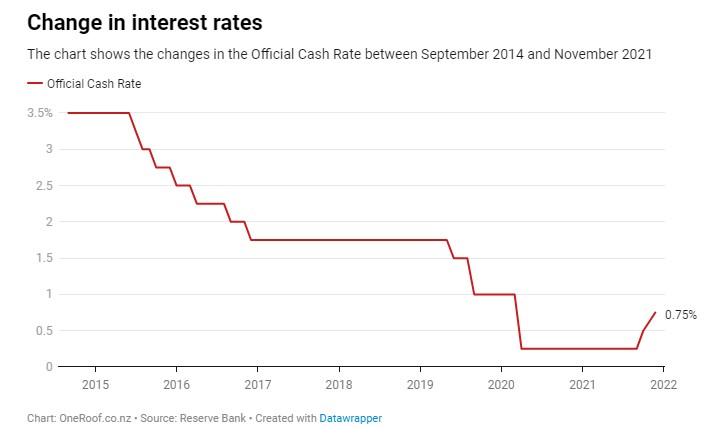
In March, the Government announces new housing policies designed to level the playing field. Investors are targeted again, with the Brightline test extended to 10 years for existing properties (still five for new-builds) and interest deductibility is removed on all new purchases and phased out on those bought before the announcement, although it still applies for new-build purchases.
Net migration is almost non-existent and a larger dent is being made in housing shortages.
-
Conclusions
Low mortgage rates have been needed lately to support the economy, but the flipside is that the inequality driven by house price boom could have been mitigated if New Zealand had built more houses earlier.
The housing shortage was partly the result of the industry shake-out following the GFC but there are lingering issues of land use constraints and the Resource Management Act. The Auckland Unitary Plan seems to be driving a step change in that market, and the experience of post-quake Canterbury shows what can be done if decision-makers react quickly and open up land. The recent easing in the requirement to get resource consent (e.g. for up to three houses of three storeys on the same section) also seems to be a step in the right direction.
Would a capital gains tax have changed all of this? Maybe. But New Zealand already has a form of CGT anyway in the form of the Brightline test. Perhaps a land tax or wealth tax would be more effective, but equally important would be carrots for investing in other assets, rather than sticks to stop people buying property.
– Kelvin Davidson is chief property economist at CoreLogic

















































